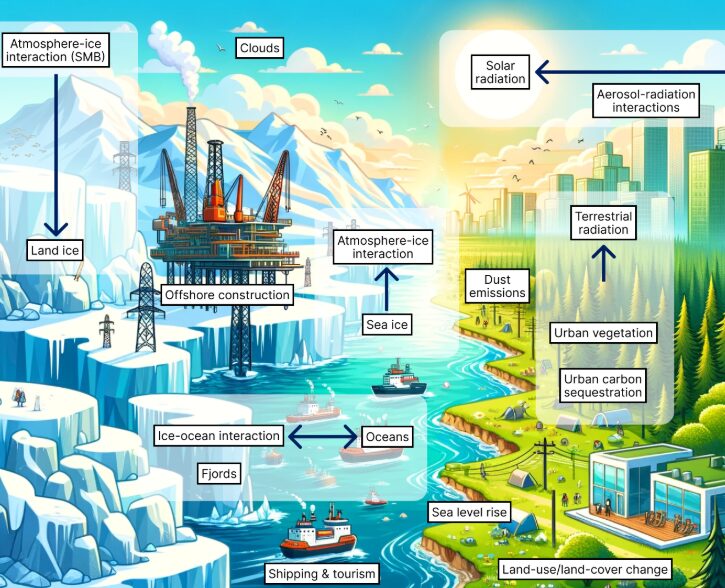Digital twins promise more accurate climate simulations: TerraDT project launch

Ever wanted to visualise the impact of your decisions in real time? The newly launched TerraDT project aims to enable you to do just that.
This ambitious EU-funded project aims to improve climate modeling and support informed decision-making for local and global challenges through high-resolution climate impact assessments.
Key highlights
- Enhanced climate modeling capabilities: TerraDT builds on the European Commission’s Destination Earth (DestinE) Climate Change Adaptation Digital Twin (Climate DT) by incorporating new components to better model glaciers, sea ice, vegetation, and aerosols. These advancements will improve the accuracy and reliability of climate projections.
- High-resolution simulations: Climate projections are conducted at a resolution of 10 km, leveraging Europe’s most advanced supercomputers—LUMI in Finland and Mare Nostrum 5 in Spain—ensuring unprecedented precision in environmental modeling.
- Enhanced decision-making tools: TerraDT provides actionable insights for local planning, such as determining optimal locations for shipping routes, parks or urban infrastructure.
Applications and impact
The TerraDT project is designed to address pressing challenges such as rising sea levels, extreme weather events, and biodiversity loss. Among other things, its outputs will support planning of shipping routes affected by sea ice conditions, assessing carbon sinks and forest biodiversity, designing urban green spaces to mitigate temperature changes and much, much more.
By providing more accurate assessments and user-friendly tools, this groundbreaking digital twin technology will empower policymakers, industries, and communities to make informed decisions that drive climate adaptation and mitigation strategies.
Pan-European collaboration
TerraDT is a Horizon Europe-funded initiative that brings together expertise from leading institutions across Europe. The project will run for four years (2025–2028) and is coordinated by CSC – IT Center for Science in Finland. Partners include universities, research centers, and supercomputing facilities working collaboratively to address critical gaps in climate modeling.
For more information about TerraDT, visit terradt.eu or contact info@terradt.eu.
–
Disclaimer
Created with funding from the European Union. Views and opinions expressed are however those of the author(s) only and do not necessarily reflect those of the European Union or the granting authority. Neither the European Union nor the granting authority can be held responsible for them.
The information and documentation in this section are published with permission from their respective sources. While the MAIA Project strives to ensure the accuracy and completeness of the content, we make no guarantees or warranties of any kind, express or implied, about the validity, reliability, or accuracy of the information. The original sources are solely responsible for the content they provide. We disclaim any liability for any errors, omissions, or inaccuracies in the information and for any actions taken in reliance on the information contained on this website.

Comments
There is no content